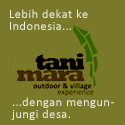Unique Sea Transportation for Tourism
As you might have already learnt, in tourism there are several types of transportation being used to fulfill the need of the tourists. In general, there are road transportation, rail transportation, sea transportation, and air transportation. In Indonesia, most of the area of the country is covered by sea. Therefore, to evolve the tourism in this country, it makes more sense if we thrive to use sea transportation.Like the other modes of transport, sea transportation also serves for three kind of use in the tours and travel industry. That is to serve as modes of transport from the origin country to the country of destination. Then, to serve as modes to explore the destination itself once they get there. The third use is to serve as the tourist attraction itself.
In order to understand more of the use of sea transportation for tours and travel industry, we should try to explore by ourselves more about the uniqueness of sea transportation in tourism.






